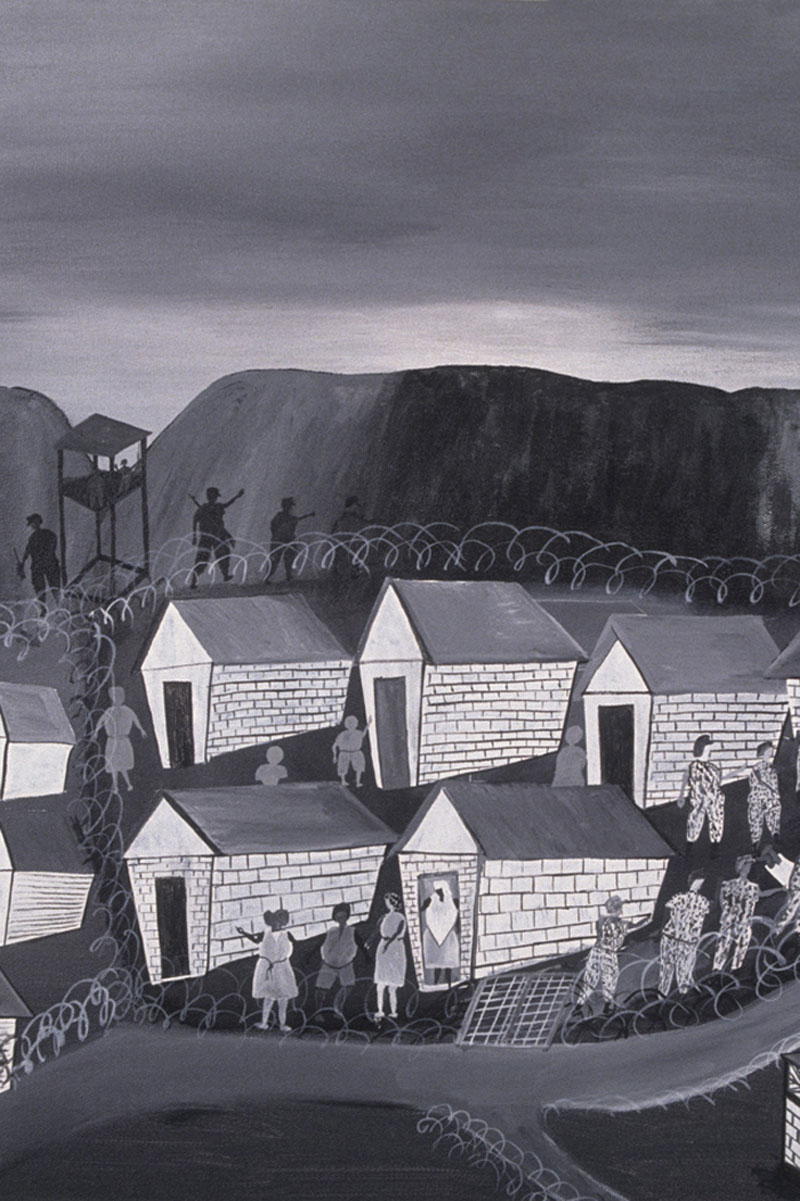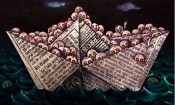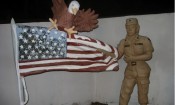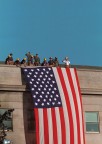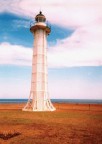
In the early 1990’s Cubans constructed rafts to flee Cuba, hoping to reach the United States. Instead, many were intercepted and sent to Guantánamo Bay. Rafters, or balseros, were housed in tents at Guantánamo’s Camp Happy while the United States debated what to do with them. As they waited, many Cuban rafters created art that expressed their frustrations as well as their desires for freedom.
Initially, the balseros were not given many art supplies, so most of the works were created from repurposed materials. These materials included the canvas and plywood used to construct their tents, house paint, and the ink found in ball point pens. This resilient spirit is reflected in the artwork as well as in the persistence of the artists. Eventually, outside agencies donated art supplies and the United States military developed a formal art program. In December 1995, the balseros opened an Art Gallery in Camp Happy.
The art gave the balseros a break from the monotony of camp life and a forum to showcase their talents and express their views. Carlos Aulet, a former detainee explained, “In Guantánamo, there was no work, nothing to do, but painters, musicians, writers always find a way to occupy their time and reflect their situation.” (Menendez 1995, 2)
In the summer of 2012, a label was posted on Google Maps marking “The Guantánamo Bay Museum of Art and History.” Although fictitious, the “museum” is a reminder of the enduring art made at Guantánamo.
- Caitlin Kegley, Indiana University-Purdue University Indianapolis
Initially, the balseros were not given many art supplies, so most of the works were created from repurposed materials. These materials included the canvas and plywood used to construct their tents, house paint, and the ink found in ball point pens. This resilient spirit is reflected in the artwork as well as in the persistence of the artists. Eventually, outside agencies donated art supplies and the United States military developed a formal art program. In December 1995, the balseros opened an Art Gallery in Camp Happy.
The art gave the balseros a break from the monotony of camp life and a forum to showcase their talents and express their views. Carlos Aulet, a former detainee explained, “In Guantánamo, there was no work, nothing to do, but painters, musicians, writers always find a way to occupy their time and reflect their situation.” (Menendez 1995, 2)
In the summer of 2012, a label was posted on Google Maps marking “The Guantánamo Bay Museum of Art and History.” Although fictitious, the “museum” is a reminder of the enduring art made at Guantánamo.
- Caitlin Kegley, Indiana University-Purdue University Indianapolis
